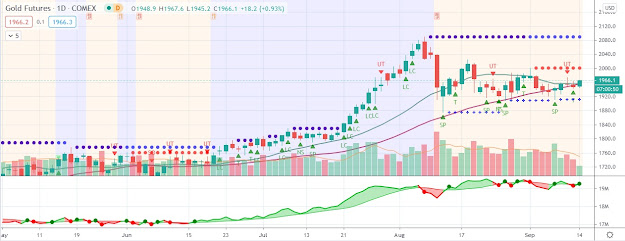Price of gold showed a muted reaction to the latest weekly U.S. jobless claims data, which at 351,000 reached a four-year low
The gold price stabilized Thursday morning near $1,645 per ounce following several days of weakness. The price of gold showed a muted reaction to the latest weekly U.S. jobless claims data, which at 351,000 reached a four-year low. Silver traded near unchanged as well, at $32.21 per ounce, while the U.S. Dollar Index dipped 0.3% to 80.376 against a basket of foreign currencies. U.S. equity markets held near the flatline, as the S&P 500 Index dipped 0.1% to 1,393.40.
Several analysts have attributed the recent gold price sell-off to items both included and excluded from the Federal Reserve’s monetary policy statement on Tuesday. The slightly more hawkish tone of the statement, coupled with the Fed’s decision to not launch a third round of quantitative easing (QE3), were the two primary catalysts for the yellow metal’s decline this week. Barclays Capital wrote in a note to clients that the U.S. economy would “either need to suddenly slow or inflation to decline more than the Committee expects before additional asset purchases are initiated.”
However, one firm that disagreed with that assessment was Bank of America. Francisco Blanch, the bank’s head of commodity research, stated at a recent industry conference that “I still think we’re going to get another round of QE.” He also contended that additional monetary stimulus will be required for economic growth to reach the Fed’s targets, and that QE3 could be expected to lift the price of gold by between $200 and $300 per ounce.
Several analysts have attributed the recent gold price sell-off to items both included and excluded from the Federal Reserve’s monetary policy statement on Tuesday. The slightly more hawkish tone of the statement, coupled with the Fed’s decision to not launch a third round of quantitative easing (QE3), were the two primary catalysts for the yellow metal’s decline this week. Barclays Capital wrote in a note to clients that the U.S. economy would “either need to suddenly slow or inflation to decline more than the Committee expects before additional asset purchases are initiated.”
However, one firm that disagreed with that assessment was Bank of America. Francisco Blanch, the bank’s head of commodity research, stated at a recent industry conference that “I still think we’re going to get another round of QE.” He also contended that additional monetary stimulus will be required for economic growth to reach the Fed’s targets, and that QE3 could be expected to lift the price of gold by between $200 and $300 per ounce.




Comments
Post a Comment